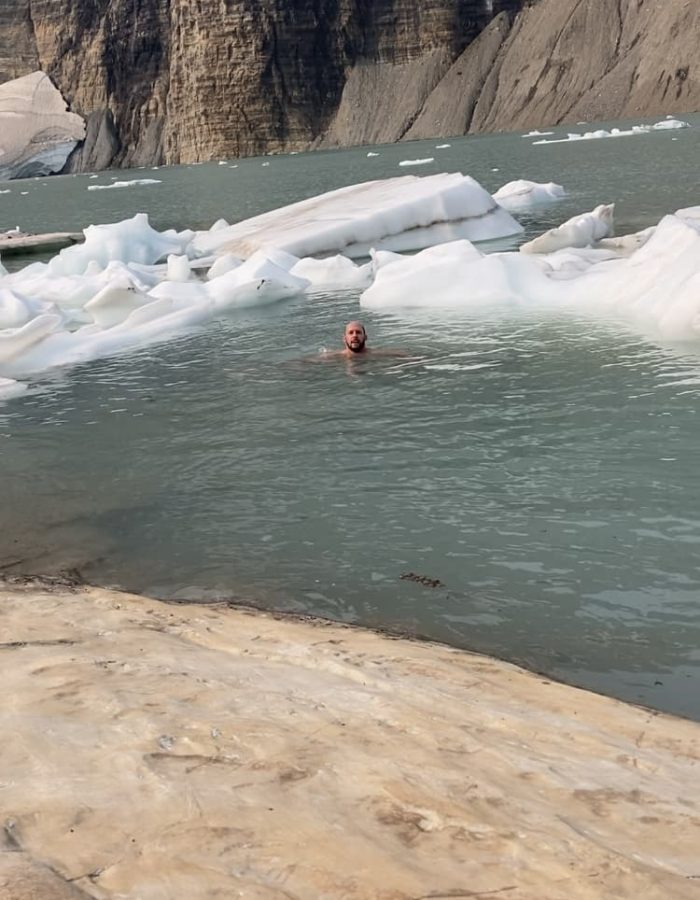What Is The Wim Hof Method? And How Does It Help Us Reconnect With Nature?
In the coming weeks, we’ll be talking more about the Wim Hof Method. It plays a role in every Recal trip, especially the breathwork and mindset elements of our trips, so we thought we’d take some time to unpack it now. Today, we’ll look at the various components of the Wim Hof Method and its place in our hyper-driven, overworked and exhausted society. Of course, one of the staples of Recal is helping us slow down and appreciate our environment once again. So, can the Wim Hof Method help us reconnect with nature?
Yes, through breathwork, cold exposure, and building commitment the Wim Hof method can help you reconnect with nature.
First, what is the Wim Hof Method?
At its core, the Wim Hof Method is a method of recalibrating your body and mind. It has three primary pillars:
- Breathwork
- Cold Exposure
- Commitment
At surface level, those sound relatively simple (albeit potentially intimidating). But we’re here to elaborate and share insights on each pillar and the role it can play in our lives.
Wim Hof, a Dutch extreme athlete nicknamed The Iceman, founded the Wim Hof Method to help us reconnect with nature. From his website, he states
“Over time, our relationship with the world we live in has changed. Our lifestyles have disconnected us from the natural environment.”
Through each pillar, the Wim Hof Method aims to rebuild this broken relationship.
How does breathwork benefit your body and mind?
Try holding your breath for more than a minute or two and you’ll quickly “remember” the importance of breathing. The Wim Hof style of breathwork is different than our normal breathing with its focused deep breaths, holds, and recovery. These rhythmic exercises have a direct calming effect that helps quiet our mind and find inner peace. Along with this, Wim Hof breathwork helps to lower anxiety and increase our mental well-being. By its activation of the Vagus Nerve, we are able to consciously balance our nervous system (and control our stress response)..
Within our body, it is proven scientifically to lower inflammation and strengthen our immune system, as well as lower acidity levels in the blood. In the long run, the breathwork exercises are a training tool to increase the strength of our diaphragm, the muscle that controls breathing, and increase our lung capacity (which studies show is a contributor to a long, healthy life).
What role does cold exposure play?

The next part of the method is cold exposure. Wim Hof earned his nickname The Iceman after setting multiple records for cold water swims, direct body exposure to ice, and climbing high elevation mountains like Mt. Kilmanjaro and part of Everest in only shorts. Cold therapy has also grown in popularity with runners, distance cyclists, and professional athletes. Much like the breathwork, the role cold exposure plays has an impact on both the mind and body. Even if you are just exposed for a minute or so, it has been scientifically proven to release the stress hormone norepinephrine (also known as noradrenaline), increasing levels by 530%. This hormone helps with wakefulness, focus, attention, diligence, and mood. In a similar way, dopamine level is also increased by as much as 250%, which is responsible for positive reinforcement when we accomplish something and aids in confidence and self-worthiness. Both of these stress hormones are commonly used by pharmaceutical companies to help with ADHD, anxiety, and depression medications.
In our body, cold exposure is also proven to help lower inflammation and strengthen our immune system. It is also a great way to exercise our vascular system – the system of blood vessels responsible for distributing oxygen throughout our body. Without a healthy vascular system, our muscles, tissues, and vital organs do not receive healthy levels of oxygen. Lastly, the cold is also tied to increased metabolism.
As you can see, there are many benefits for our body and mind through breathwork and cold exposure.
Building commitment within your heart and mind
The first two pillars — breathwork and cold exposure — lay the groundwork for the third. Building commitment is a critical component of the Wim Hof Method.
Internally, it takes both a physical and mental effort to overcome the initial reaction to cold exposure. Even breathwork requires patience and dedication. Additionally, in a stressful environment (like the cold), you are challenged to ‘quiet your mind’ as a way to withstand the harsh conditions. This is very similar to any form of mindfulness where consistent practice produces positive results. A quiet mind is able to find stillness and presence in a moment – something that is vitally important in our modern world of information, noise, and distraction overload. As you embrace the Method, it increases your ability to face the many challenges you experience in life.

The nature connection

The three pillars of the Wim Hof Method — breathwork, cold exposure, and internalized commitment — are the what. They’re the functional practices. Now let’s look at the how — that is, how they translate into practical application.
Think about where you live. Even if your home is in the countryside, there’s still a sense of “invasion” where modern society invaded. Simply as a by-product of an evolving society, our relationship with nature has changed.
For thousands of years, humans lived in environments that were completely void of protection to the elements. Our DNA is built from our ancestors that hunted, gathered, and built community in partnership with nature. They lived in conditions much harsher than we expose ourselves to in our modern world – extreme cold, heat, scarce food, makeshift shelter, etc. For most of us today, our inherent survival needs are met, but our innate instincts and ability to survive (and thrive) in these conditions are all but gone.
Through breathwork, cold exposure, and building commitment, the Wim Hof Method seeks to rebuild this connection with our environment. We untap the innate abilities of our body that sometimes we take for granted – or forget completely we have them. Breathing is as much a part of our life as eating. Yet breathwork takes this a step further with focused and mindful attention. Cold exposure might sound unpleasant at first, but the goal is to recalibrate our system. Finally, internalized commitment is necessary to achieve both of the first two pillars and introduce ‘quiet’ into our minds. Once you can master it for them, you can tackle whatever curveballs life throws your way.
Other benefits of the Wim Hof Method
How well do you sleep? Do you feel lethargic every day, even when you’ve had a full night’s rest? Is stress constantly hanging over your head? Do you give up easily, stopping when the going gets tough? Finally, do you feel like you’re perpetually sick or susceptible to whatever cold or flu is going around?
There are distinct benefits to the Wim Hof Method beyond reconnecting with nature. Improved sleep, increased energy, reduced stress, enhanced willpower, and a heightened immune system are just some of the benefits the Wim HofMethod has to offer.
Mindfulness through the Wim Hof Method
Before we leave you today, there’s something important we want to clarify. The commitment benefits and the sense that you can tackle life’s challenges are opposite the standard operating procedure of most people today. In large part, we live in an ego-driven society. One might be inclined to think that the Wim Hof Method is designed to give you additional drive or ambition or abilities or optimization to do more, more, more.
This is not the case. Nor do we support that approach to the Wim Hof Method. Rather, we believe the way to use the method is to help improve your mindfulness and reset your worldview. There’s a difference between saying “I can do whatever I want” and “I can face whatever I am given.” The former is the ego-driven mindset. The latter is an approach embedded in mindfulness. How we respond to challenges of life determines our reality.
In the coming weeks, we’ll be unpacking more about the Wim Hof Method and its connection with overcoming burnout, so be sure to check back soon for more updates.
